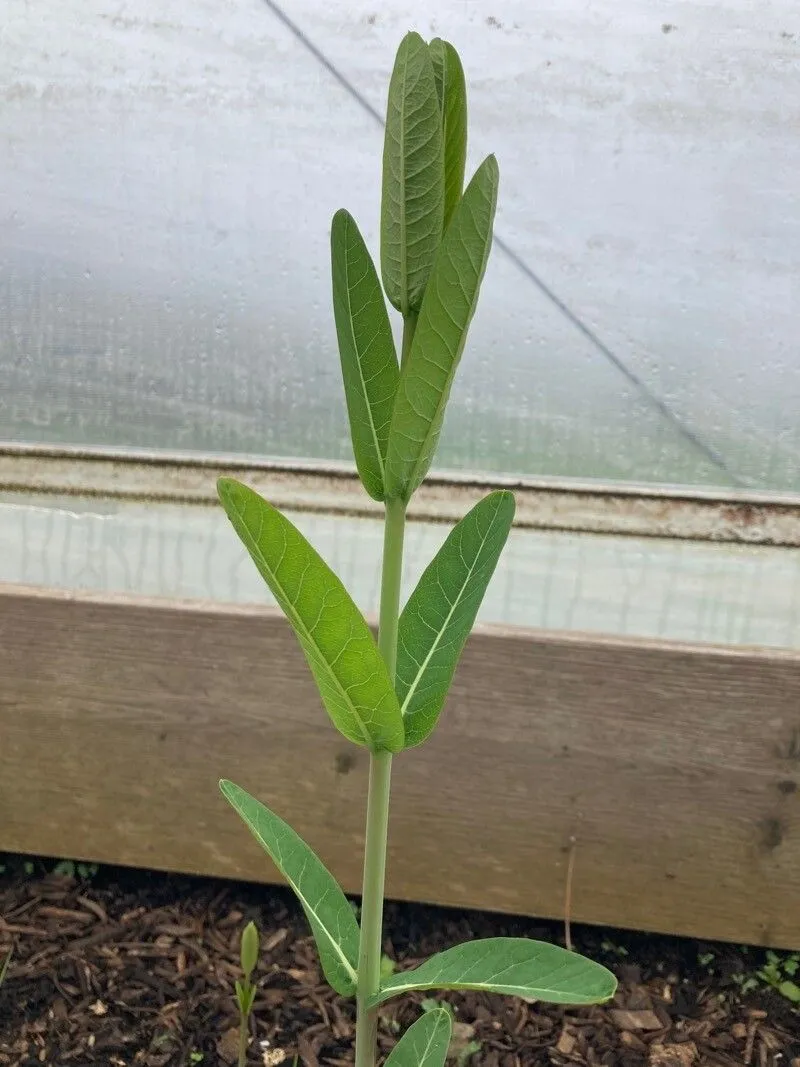
Author: L.
Bibliography: Sp. Pl.: 213 (1753)
Year: 1753
Status: accepted
Rank: species
Genus: Apocynum
Vegetable: False
Observations: Canada to U.S.A.
Indian-hemp, also known by its scientific name Apocynum cannabinum, is a fascinating perennial plant native to North America, found extensively from Canada down to the United States. This robust herb is a member of the Apocynaceae family, which encompasses a wide variety of flowering plants.
Historically, Indian-hemp has thrived in a multitude of environments, ranging from the wetlands and riverbanks to dry and rocky terrains. Its ability to adapt to such diverse habitats is a testament to its resilience and versatility. The plant typically grows to a height of about 1-2 meters and is characterized by its slender, branched stems and opposite, lance-shaped leaves, which give it a distinctive appearance.
Flowering from June to August, Indian-hemp produces small, white to greenish-white flowers that are clustered in terminal or axillary cymes. These blooms eventually give way to paired, slender seedpods that contain numerous fine, silk-tufted seeds, facilitating wind dispersal. The flowers, though not particularly showy, play a crucial role in the local ecosystem by providing nectar for various pollinators, including bees and butterflies.
One striking feature of Apocynum cannabinum is its latex-containing sap. This milky substance exudes from the plant when it is cut or damaged, serving as a defense mechanism against herbivores. However, it is important to note that this sap can be toxic if ingested and may cause skin irritation upon contact.
Indian-hemp has a rich ethnobotanical history. Indigenous peoples of North America extensively utilized the plant for various purposes. The fibrous stems were particularly valued for their strength and durability, and were processed to create cordage, nets, and textiles. The plant was also used medicinally; various parts of Indian-hemp were employed to prepare remedies for ailments ranging from digestive issues to respiratory problems.
Despite its historical utility, caution is warranted when handling or using Indian-hemp today, both due to its toxic properties and the potential for environmental impacts should it become weedy or invasive in certain areas.
In summary, Apocynum cannabinum, or Indian-hemp, is a resilient and multifaceted plant with a significant historical role among Indigenous cultures in North America. Its adaptability to different environments and its various uses underscore its importance, even as modern awareness of its toxic properties advises careful handling.
Eng: american-hemp, common dogbane, dogbane, hemp dogbane, indian hemp, indian-hemp, prairie dogbane, clasping-leaved dogbane, velvet dogbane
Deu: hanf-hundsgift, amerikanisches hundsgift
Spa: cáñamo indio
Swe: indianhampa
Fra: apocyn chanvrin
En: Indian-hemp, Hemp dogbane, American-hemp, Dogbane, Indianhemp, Indian hemp, Indianhemp dogbane, PRAIRIE DOGBANE, Common dogbane, Clasping-leaved dogbane, Velvet dogbane
Ar: أبوسينوم كانابيوم
Az: Kənafabənzər kəndir
Zh: 夹竹桃麻
Eo: Kanaba apocino
Fr: Apocyn chanvrin
De: Amerikanisches Hundsgift, Hundsgift, Indianischer Hanf, Hanf-Hundsgift
Mk: Конопен кучешки чемер
Ru: Кутра коноплёвая
Es: Cáñamo indio
Sv: Indianhampa
Uk: Кутра конопляна
Taken Sep 17, 2015 by EOL − laurenupadhyay (cc-by-nc)
Taken Jul 6, 2017 by Tela Botanica − _ (cc-by-sa)
Taken Jun 25, 2014 by Tela Botanica − Yoan MARTIN (cc-by-sa)
Taken Sep 21, 2021 by MKJL Property (cc-by-sa)
Taken May 25, 2022 by Avery Mandigo (cc-by-sa)
Taken Jun 30, 2021 by u u (cc-by-sa)
Taken Jul 23, 2022 by Ryan Heaney (cc-by-sa)
Taken Aug 1, 2019 by Annie lambcfam (cc-by-sa)
Taken Jun 24, 2019 by Botanist Massachusetts (cc-by-sa)
Taken Jul 18, 2021 by Feya Sterling (cc-by-sa)
Taken Aug 26, 2015 by EOL − botany08 (cc-by)
Taken Jun 6, 2003 by EOL − Steven J. Baskauf (cc-by-nc-sa)
Taken Jul 6, 2017 by Tela Botanica − _ (cc-by-sa)
Taken Aug 17, 2022 by Łukasz Łukasiński (cc-by-sa)
Taken Jul 18, 2021 by Feya Sterling (cc-by-sa)
Taken Oct 10, 2015 by EOL − yaoshawn (cc-by-nc)
Taken Aug 14, 2022 by Ellen Jean (cc-by-sa)
Taken Aug 16, 2020 by Gail (cc-by-sa)
Taken Aug 14, 2021 by SunriseRacine (cc-by-sa)
Taken Jan 17, 2021 by aj (cc-by-sa)
Taken Jun 6, 2003 by EOL − Steven J. Baskauf (cc-by-nc-sa)
Taken Jul 26, 2022 by megan allsup (cc-by-sa)
Taken Jun 30, 2021 by u u (cc-by-sa)
Taken Jul 14, 2021 by Maxwell Fowler (cc-by-sa)
Taken Aug 1, 2021 by Ruthann Pickerd (cc-by-sa)
Taken Jul 11, 2018 by Lisa J (cc-by-sa)
Taken Aug 17, 2019 by max (cc-by-sa)
Taken Aug 9, 2019 by Miguel Denyer (cc-by-sa)
Taken May 21, 2022 by krunk lama (cc-by-sa)
Taken Jun 30, 2021 by u u (cc-by-sa)
© copyright of the Board of Trustees of the Royal Botanic Gardens, Kew.
Growth form: Single Stem
Growth habit: Forb/herb
Growth rate: Moderate
Ph maximum: 7.0
Ph minimum: 4.5
Family: Myrtaceae Author: (F.Muell.) K.D.Hill & L.A.S.Johnson Bibliography: Telopea 6: 402 (1995) Year: 1995 Status:…
Family: Rubiaceae Author: Pierre ex A.Froehner Bibliography: Notizbl. Bot. Gart. Berlin-Dahlem 1: 237 (1897) Year:…
Family: Sapindaceae Author: Koidz. Bibliography: J. Coll. Sci. Imp. Univ. Tokyo 32(1): 38 (1911) Year:…
Family: Asteraceae Author: A.Gray Bibliography: Pacif. Railr. Rep.: 107 (1857) Year: 1857 Status: accepted Rank:…
Family: Fabaceae Author: Medik. Bibliography: Vorles. Churpfälz. Phys.-Ökon. Ges. 2: 398 (1787) Year: 1787 Status:…
Family: Aspleniaceae Author: (Cav.) Alston Bibliography: Bull. Misc. Inform. Kew 1932: 309 (1932) Year: 1932…